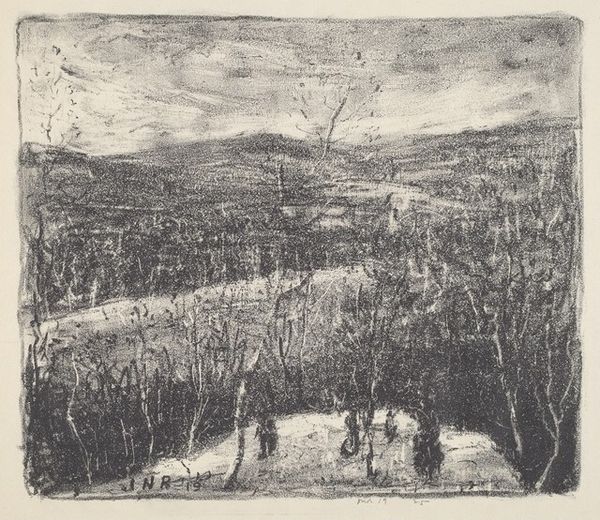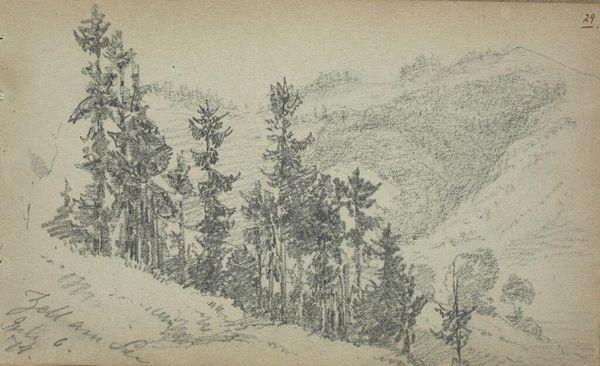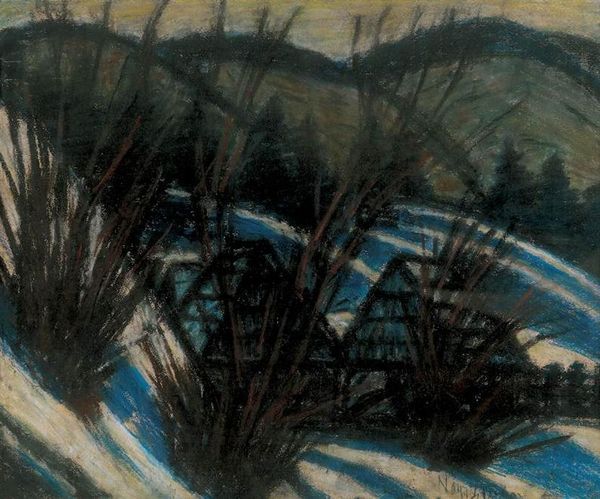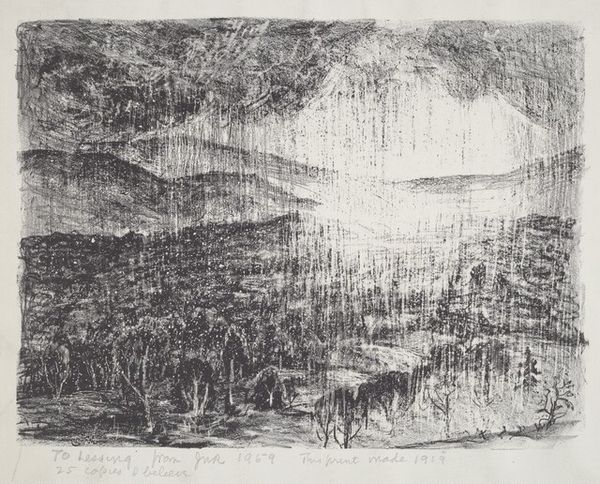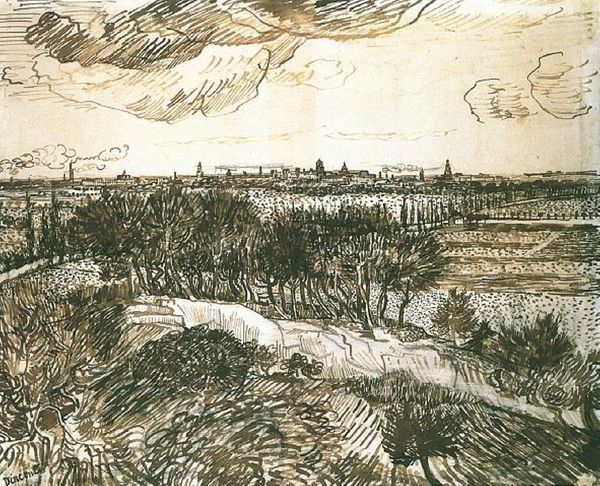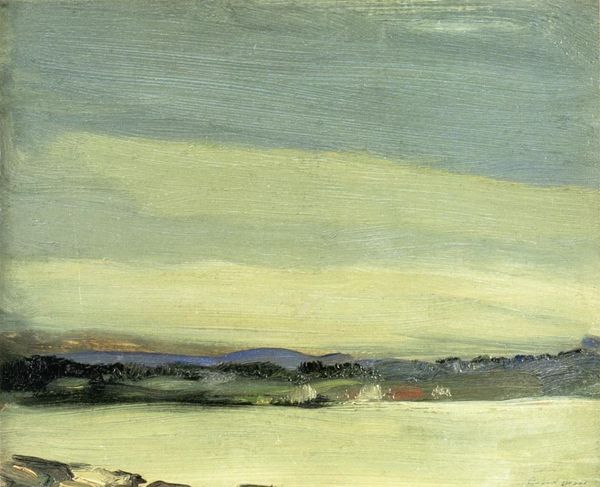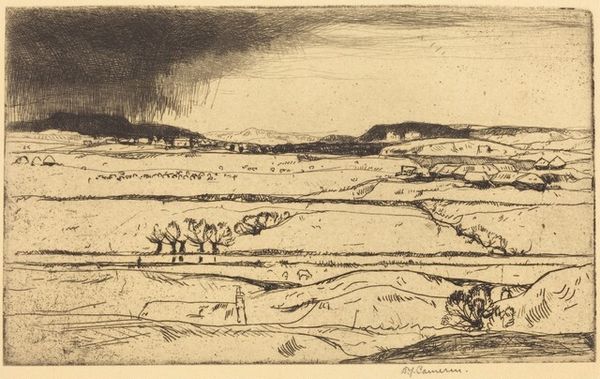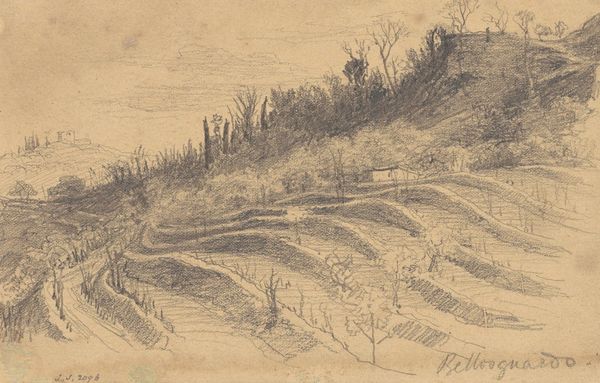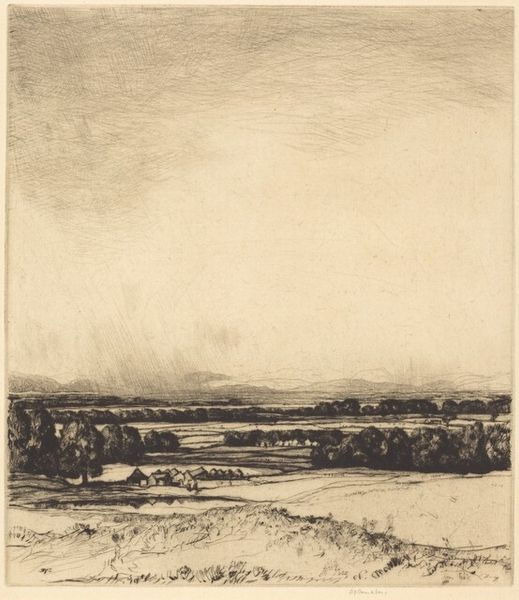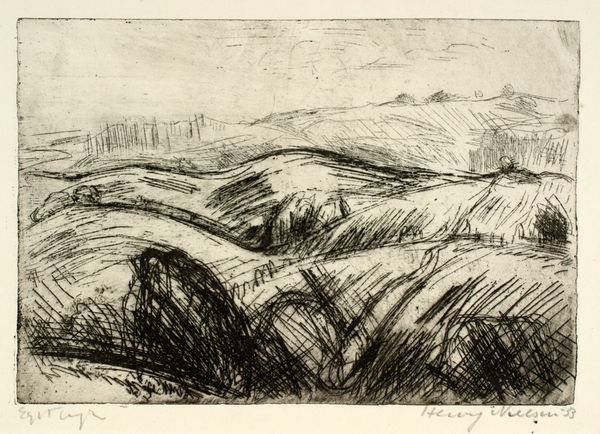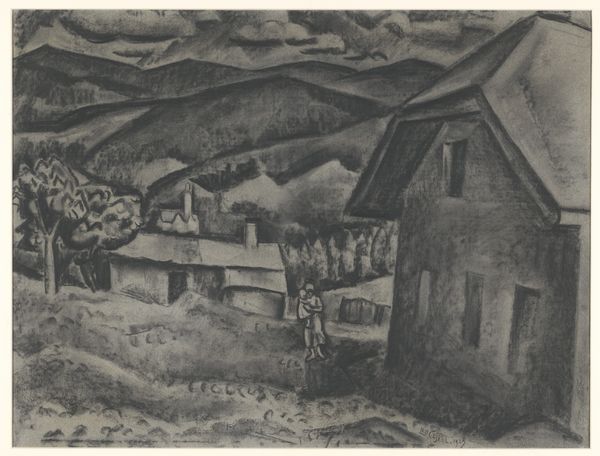
drawing, charcoal
#
drawing
#
landscape
#
charcoal drawing
#
sketch
#
charcoal
Copyright: Public domain
Editor: This charcoal drawing is titled "Winter Landscape" by Istvan Nagy, created in 1927. The muted tones really set a somber mood, and the landscape is quite desolate, with only a few trees dotting the hills. How would you interpret this work? Curator: It's interesting you use the word "desolate." For me, the beauty resides in how Nagy employs darkness, not merely to depict a literal winter scene, but to evoke a kind of psychological or spiritual starkness. Charcoal, with its primal connection to earth and fire, is perfect for this. What feeling do the repetitive lines used to form the hills evoke in you? Editor: A sense of unending, almost monotonous, waves perhaps? There's a definite rhythm to them. Curator: Exactly. The rhythm echoes a deeper, cyclical truth about nature – the relentless turning of seasons, life, death, rebirth. Look at how the darkest marks cluster around the trees, almost shrouding them. What do trees often symbolize? Editor: Life, growth, but also family and heritage, right? Here, they seem fragile. Curator: Precisely! Think of this in the context of the interwar period, 1927. There was economic hardship, displaced populations and societal anxiety. Could those trees represent a struggling population clinging to their roots? Nagy seems to be communicating beyond the immediate landscape. Editor: I never thought about the historical context adding another layer to it, a cultural memory almost. It makes the piece so much more profound. Curator: The symbol itself, the landscape, holds the emotion; it acts as cultural memory. A drawing can indeed be very powerful. Editor: Thank you for sharing that; it definitely shifts my perspective on the artist's choices.
Comments
No comments
Be the first to comment and join the conversation on the ultimate creative platform.
